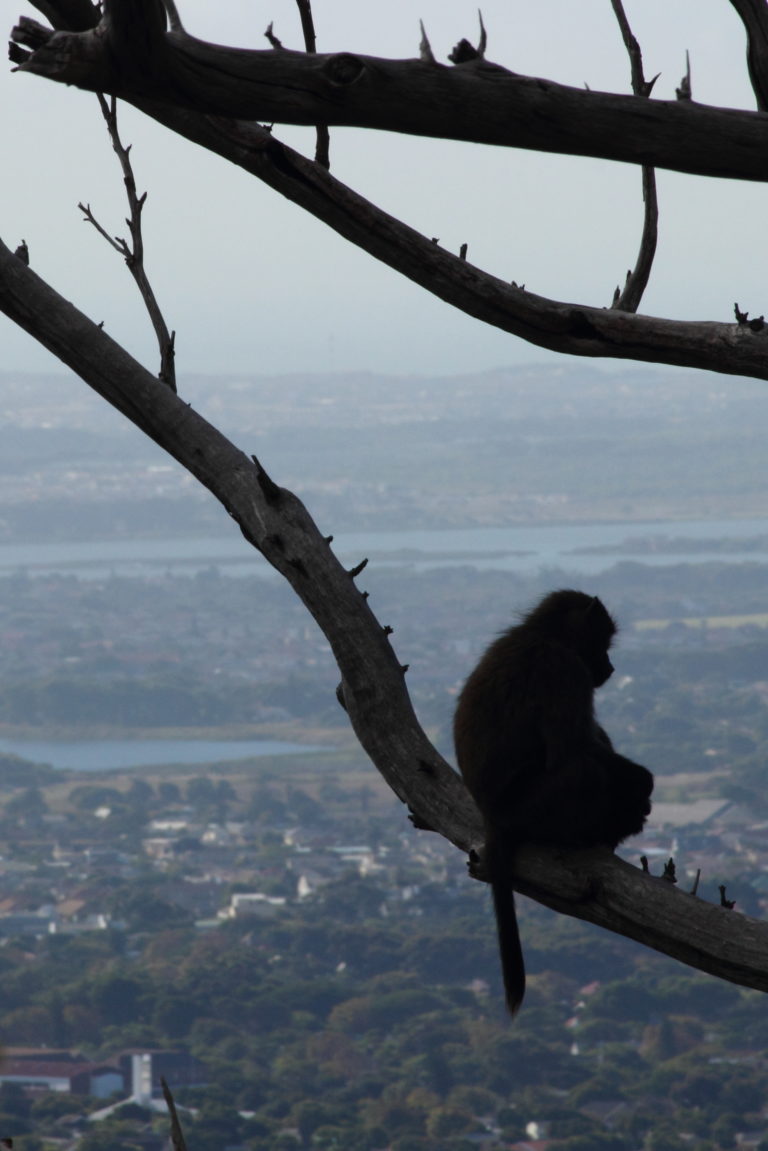Growing human populations are increasingly competing with wildlife for limited resources and this can result in chronic human–wildlife conflict. In South Africa, chacma baboons (Papio ursinus) are foraging on a variety of human‐derived foods in urban and rural areas.
To solve this human-baboon conflict, field rangers are hired to bring the baboons back to their natural environment. This strategy is largely successful, reducing the time baboons spend in the urban spaces to less than 2%. However, some baboons found a loophole in the strategy and find ways of venturing into urban areas to exploit high energy food resources.
In order to improve the management of this conflict, our team followed a troop of 60 baboons by foot, from dawn to dusk, sampling their location every 30 minutes with a handheld GPS.
Analyses of the baboons space use showed that baboons were avoiding urban areas, but staying in their vicinity, often close to natural refuges such as trees. Unexpectedly, baboons were also utilising space where field rangers disagreed on the best strategy to adopt. These “uncertain” areas, tended to be at the edge of the natural and urban habitats, allowing baboons to remain in the vicinity of raiding hotspots.
Baboons live in social groups of up to a hundred individuals. To be successful in this ever-changing social environment requires individuals to coordinate movement, preserve bonds, and strategically respond to and interact with others; this requires a special kind of intelligence. It is perhaps not that surprising that they seem to be using the same skills and intelligence to assess and respond strategically to field rangers’ activity.
Have a look at our paper here
Adaptive space use by baboons (Papio ursinus) in response to management interventions in a human‐changed landscape

